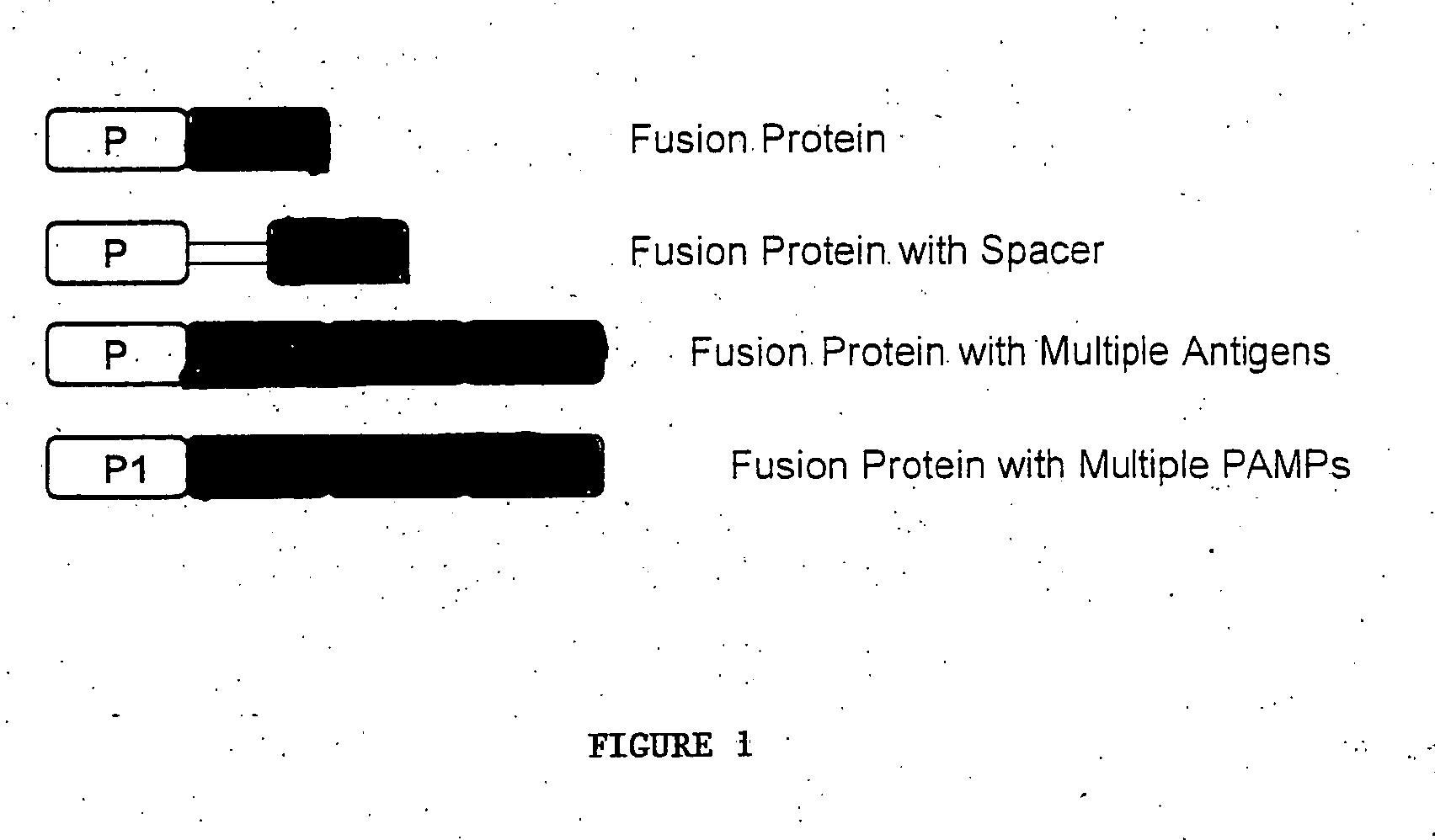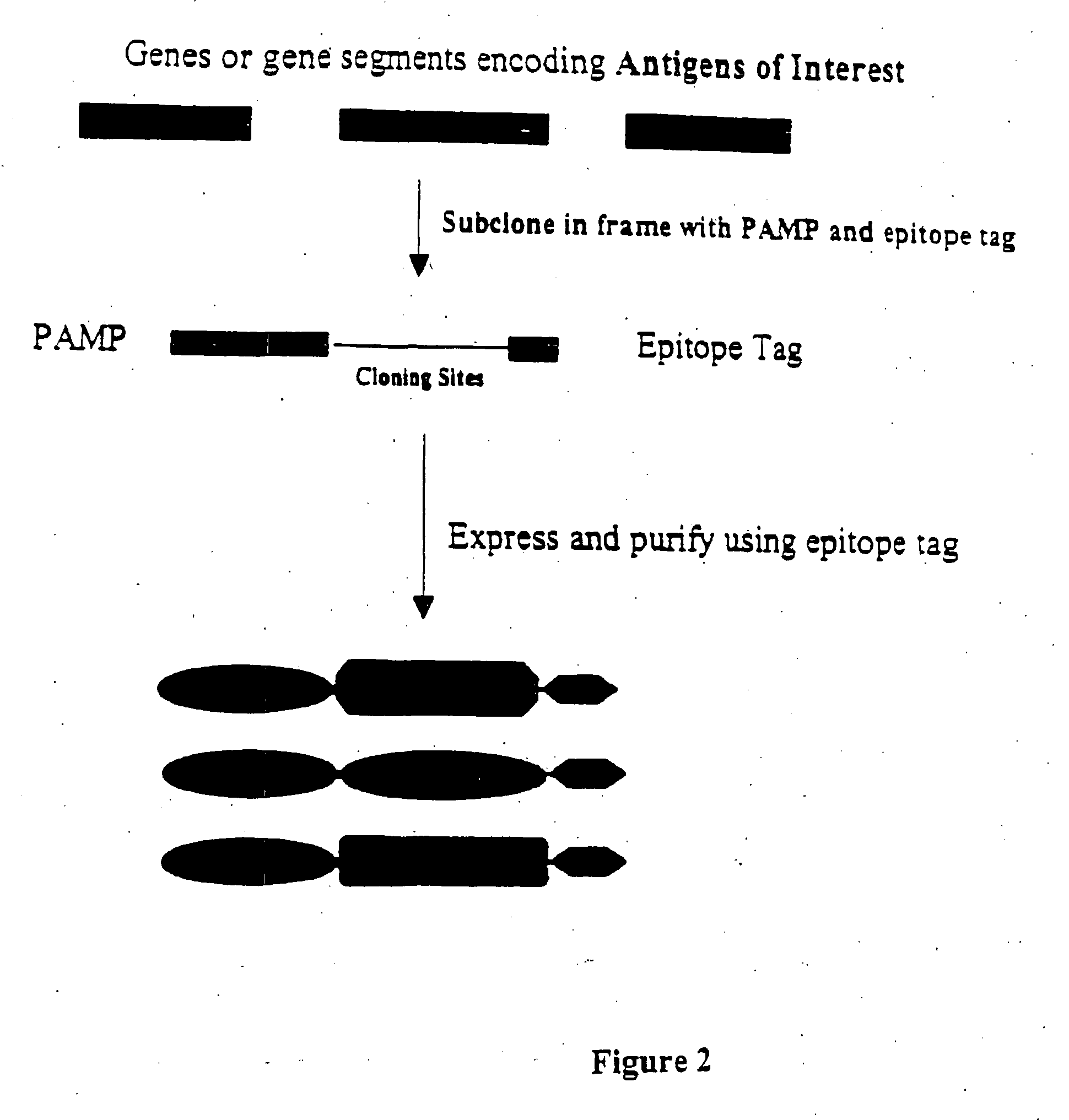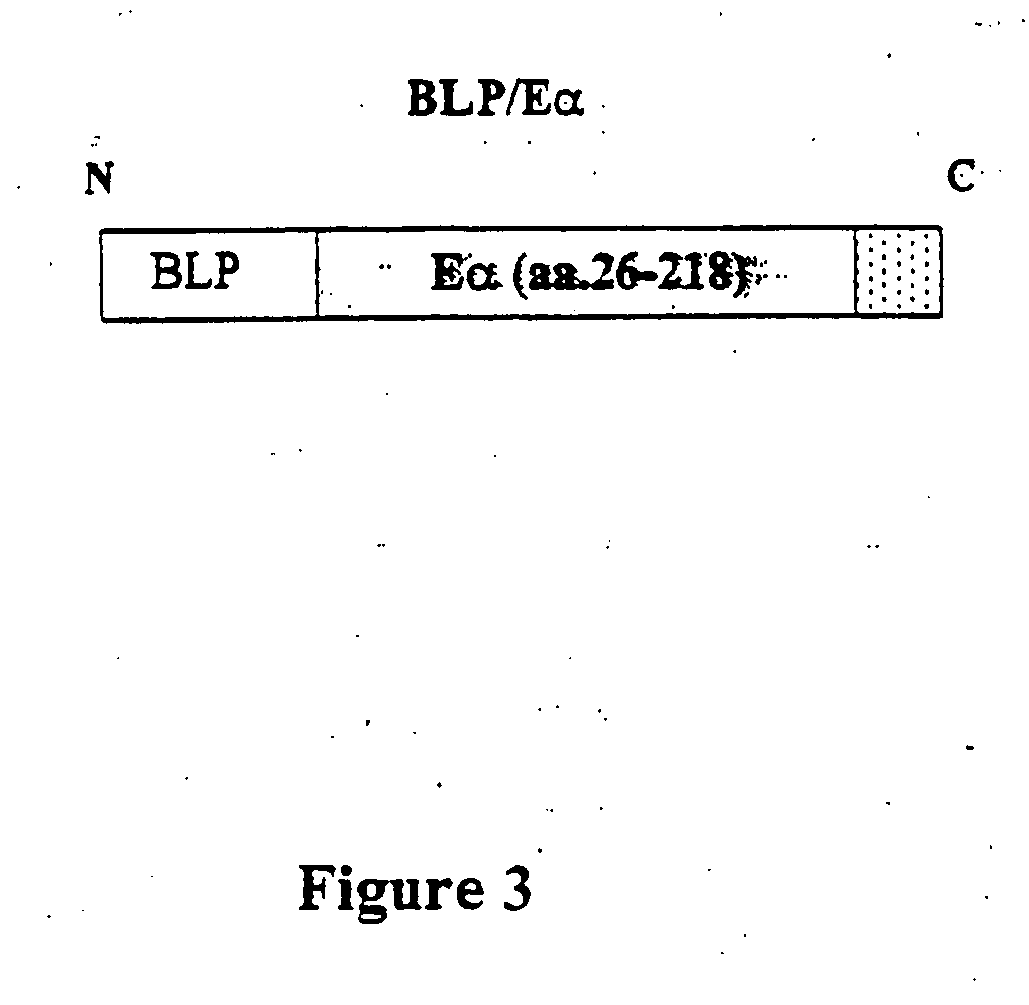Innate immune system-directed vaccines
a technology of innate immune system and vaccine, applied in the direction of dna/rna fragmentation, polypeptide with his-tag, peptides, etc., can solve the problems of limited use of innate immune response, non-immunogenic or non-protective, and often inability to use adjuvants available to increase the immunogenicity of synthetic vaccines, etc., to enhance adaptive immune response, stimulate innate immune response, enhance adaptive immune response
- Summary
- Abstract
- Description
- Claims
- Application Information
AI Technical Summary
Benefits of technology
Problems solved by technology
Method used
Image
Examples
example 1
Model Vaccine Cassette with an Antigen Domain and a PAMP Domain
[0268] In order to produce a model vaccine cassette of the present invention, we fused a pathogen-associated molecular pattern (PAMP) to the characterized mouse antigen, Eα. The PAMP we selected, BLP, is known to stimulate innate immune responses through the receptor, Toll-like-receptor-2 (TLR-2).
[0269] The protein sequence of the bacterial lipoprotein (BLP) used in the vaccine cassette for fusion with an antigen of interest is as follows: [0270] MKATKLVLGAVILGSTLLAGCSSNAKIDQLSSDVQTLNAKVDQLSNDVNAM RSDVQAAKDDAARANQRLDNMATKYRK (SEQ ID NO: 2). The leader sequence includes amino acid number 1 through amino acid number 20 of SEQ ID NO: 2. The first cysteine (amino acid number 21 of SEQ ID NO: 2) is lipidated in bacteria. This lipidation, which can only occur in bacteria, is essential for BLP recognition by Toll and TLRs. The C-terminal lysine (amino acid number 78 of SEQ ID NO: 2) was mutated to increase the yield of a reco...
example 2
Stimulation of NF-κB by BLP / Eα Model Antigen in RAW Cells
[0273] To test whether the model antigen could stimulate signal transduction pathways necessary for an immune response, we assayed NF-κB activation in the RAW mouse macrophage cell line in vitro. We developed a stable RAW cell line that harbors an NF-κB-dependent firefly luciferase gene. Stimulation of these cells with activators of NF-κB leads to production of luciferase which is measured in cell lysates by use of a luminometer. Cells were stimulated with the indicated amounts of BLP / Eα, left 5 hours and harvested for luciferase measurement.
[0274] As a control, RAW cells were stimulated with LPS in the presence and absence of polymyxin B (PmB). PmB inactivates endotoxin and as expected the activation of NF-κB activity in the LPS+PmB sample is diminished by 98%. BLP / Eα also activates NF-κB in a dose-dependent manner as shown in FIG. 4, however, treatment with PmB does not inactivate the stimulus to a statistically significan...
example 3
BLP / Eα Model Vaccine Induces the Production of IL-6 by Dendritic Cells in Vitro
[0275] An effective vaccine must be able to stimulate dendritic cells (DC)to mature and present antigen. To test whether BLP / Eα could induce DC function, we tested the ability of bone marrow-derived DC to produce IL-6 after stimulation in vitro. Bone marrow dendritic cells were isolated and grown for 5 days in culture in the presence of 1% GM-CSF. After 5 days, cells were replated at 250,000 cells / well in a 96-well dish and treated with either Eα peptide (0.3: g / ml), LPS (100 ng / ml) +Eα peptide (0.3: g / ml), or BLP / Eα. BLP / Eα was able to stimulate IL-6 production in these cells as measured in a sandwich ELISA (FIG. 5).
PUM
| Property | Measurement | Unit |
|---|---|---|
| Angle | aaaaa | aaaaa |
Abstract
Description
Claims
Application Information
 Login to View More
Login to View More - R&D
- Intellectual Property
- Life Sciences
- Materials
- Tech Scout
- Unparalleled Data Quality
- Higher Quality Content
- 60% Fewer Hallucinations
Browse by: Latest US Patents, China's latest patents, Technical Efficacy Thesaurus, Application Domain, Technology Topic, Popular Technical Reports.
© 2025 PatSnap. All rights reserved.Legal|Privacy policy|Modern Slavery Act Transparency Statement|Sitemap|About US| Contact US: help@patsnap.com



